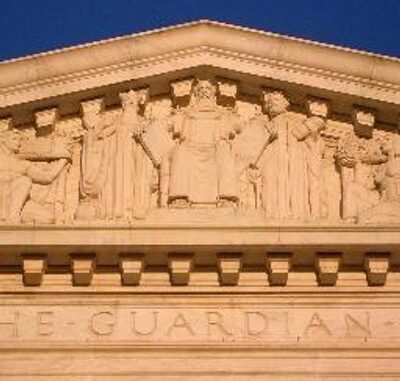
In March of 2014 the U.S. Supreme Court reversed a ruling by the 10th Circuit with an 8-1 vote. The U.S. Constitution’s 5th Amendment limitations on Government taking of private property and the provision for just compensation was upheld. The case was Brandt V. United States and thank goodness for individuals willing to fight and defend property rights for all of us.
This case revolved around the 1875 General Railroad Right of Way Act. This act made it possible for the railroads to acquire easements across private property at the time of the original patent deed in order to lay tracks. The easements provided that if the railroad ever abandoned the easement all rights would revert back to the property owner. So western ranchers and farmers were granted property deeds with these easements and with the understanding rights would revert back to the property owner if the railroad abandoned the easement. Makes sense.
But our government decided that an easement is not an easement when the government changes its mind.
In 2001 the railroad abandoned its easement on Mr. Brandt’s land. The property reverted back to Mr. Brandt as provided for in the original deed and easement. But in 2006 The U.S. Government sued Mr. Brandt for ownership with no compensation or justification provided other than an abandonment of an easement should automatically mean the Government receives title.
Mr. Brandt argued the Government was in violation of the Taking’s Clause of the 5th Amendment. The 10th Circuit ruled against Mr. Brandt, but the U.S. Supreme Court reversed their decision. The Supreme Court defended the principle that government cannot redefine personal property rights on a whim. Every property owner should be relieved and grateful to Mr. Brandt.
Here are excerpts from the Supreme Court records that sum up the key elements of this case. You can find the full record at www.supremecourt.gov or on twitter @USSupremeCourt
Page 27
Justice Alito (speaking to the US Attorney General Counsel): But the term “easement” is a well-known term with an established meaning. And you’re saying that–you said it was an easement. The Court said it was an easement. You–you persuaded the Court to say it was an easement. And now you’re saying this is some kind of property right that has no name, previously unknown in the law.
Page 33
Justice Breyer (speaking to the US Attorney General Counsel): Can you imagine or explain to me why a property lawyer worth his salt since 70 years ago or more, 1942, wouldn’t have read that case and advised his client, who was buying the land, if the railroad abandons it, it’s yours.
Page 41
Justice Kagan (speaking to the US Attorney General Counsel): The patent here, Mr. Yang, which was, what, in the mid-1970’s did not reserve anything. The government just made an uncritical grant to the grant family?
Mr Yang (US Attorney General Counsel): And that was true both in Stalker and in Steinke with respect to the subsequent patents.
Justice Kagan: Well, I’m just suggesting that after Great Northern and then you’re given this patent, which is unequivocal and does not reserve anything, why anybody would think that they haven’t gotten the whole ball of wax is a mystery.
Page 52
Justice Breyer (speaking to Mr. Yang): Doesn’t Interior or some– I mean, doesn’t the highway– aren’t there people in the government who keep track of where the highways are built?
Mr. Yang: Well, for local roads? This is — the idea that these — these rights-of-ways would go to States and localities, not Federal highways. That’s — that’s Section 912.
Justice Scalia: Yes, but you should– should know how much land the United States owns. It’s — it’s incredible that — that there’s no record in the Interior Department or anywhere else of what land the United States own. You claim you own these thousands of acres, and you say we’ve not kept track of it. We just know where it’s going to go, but we don’t know what we own.
